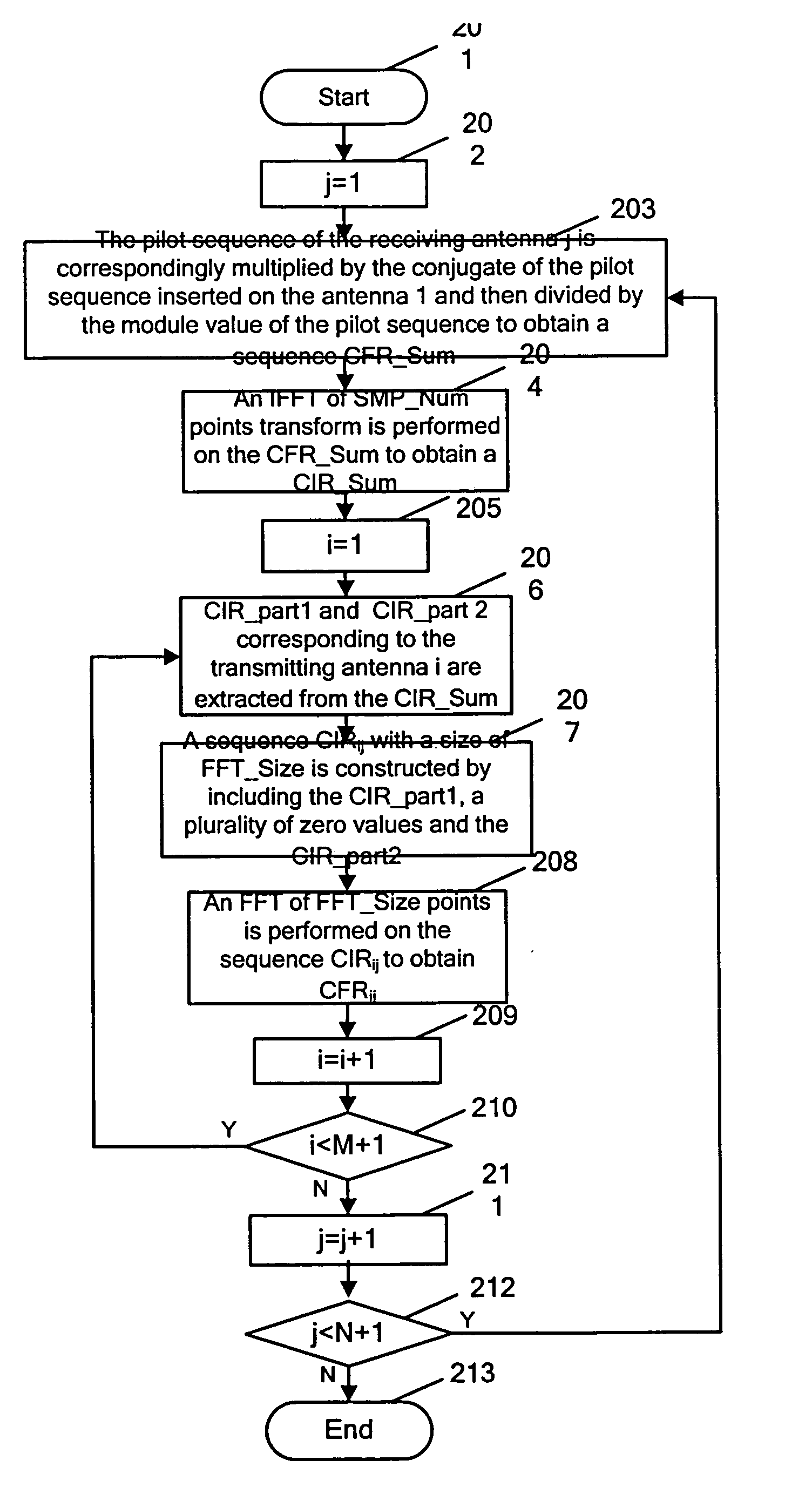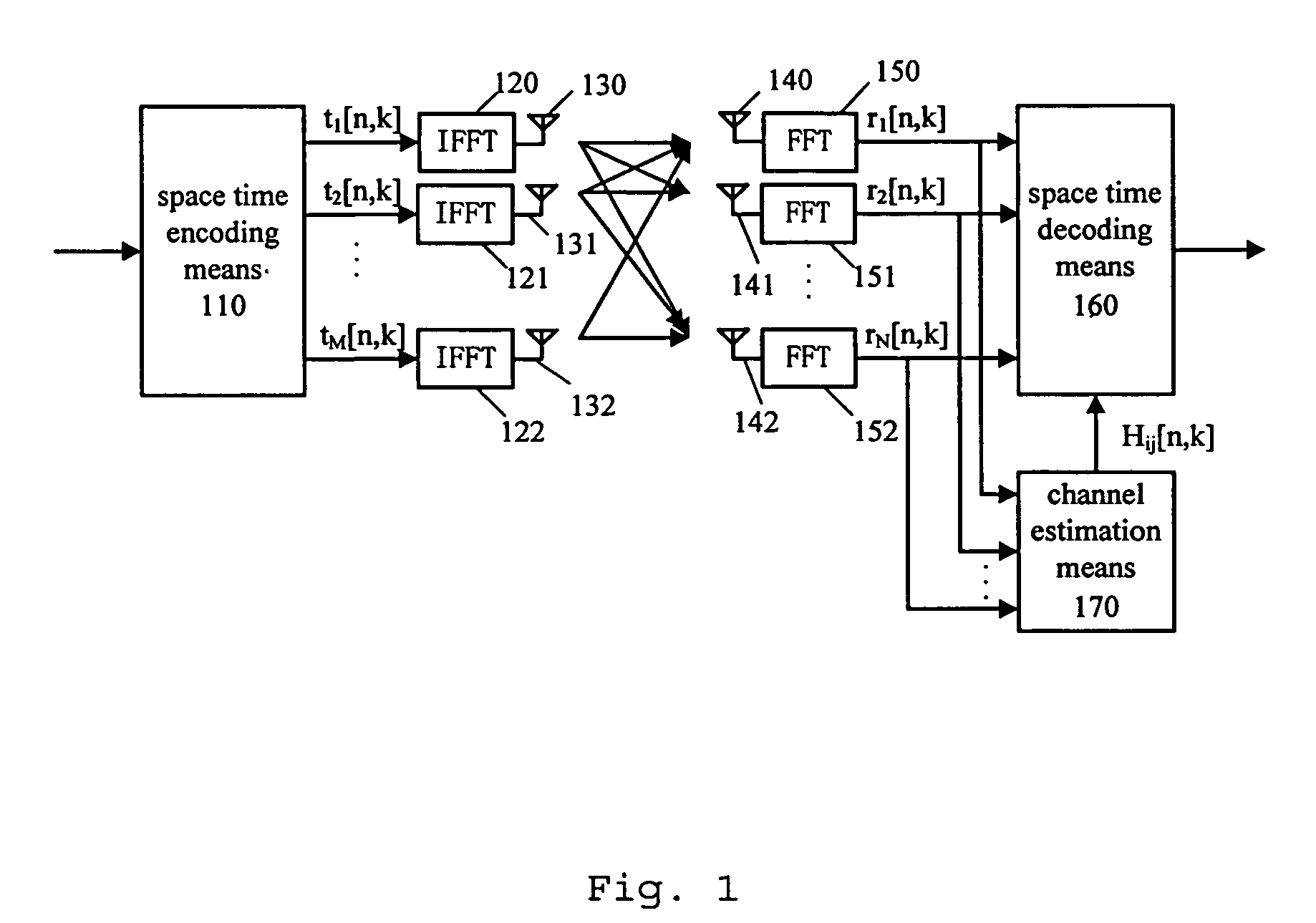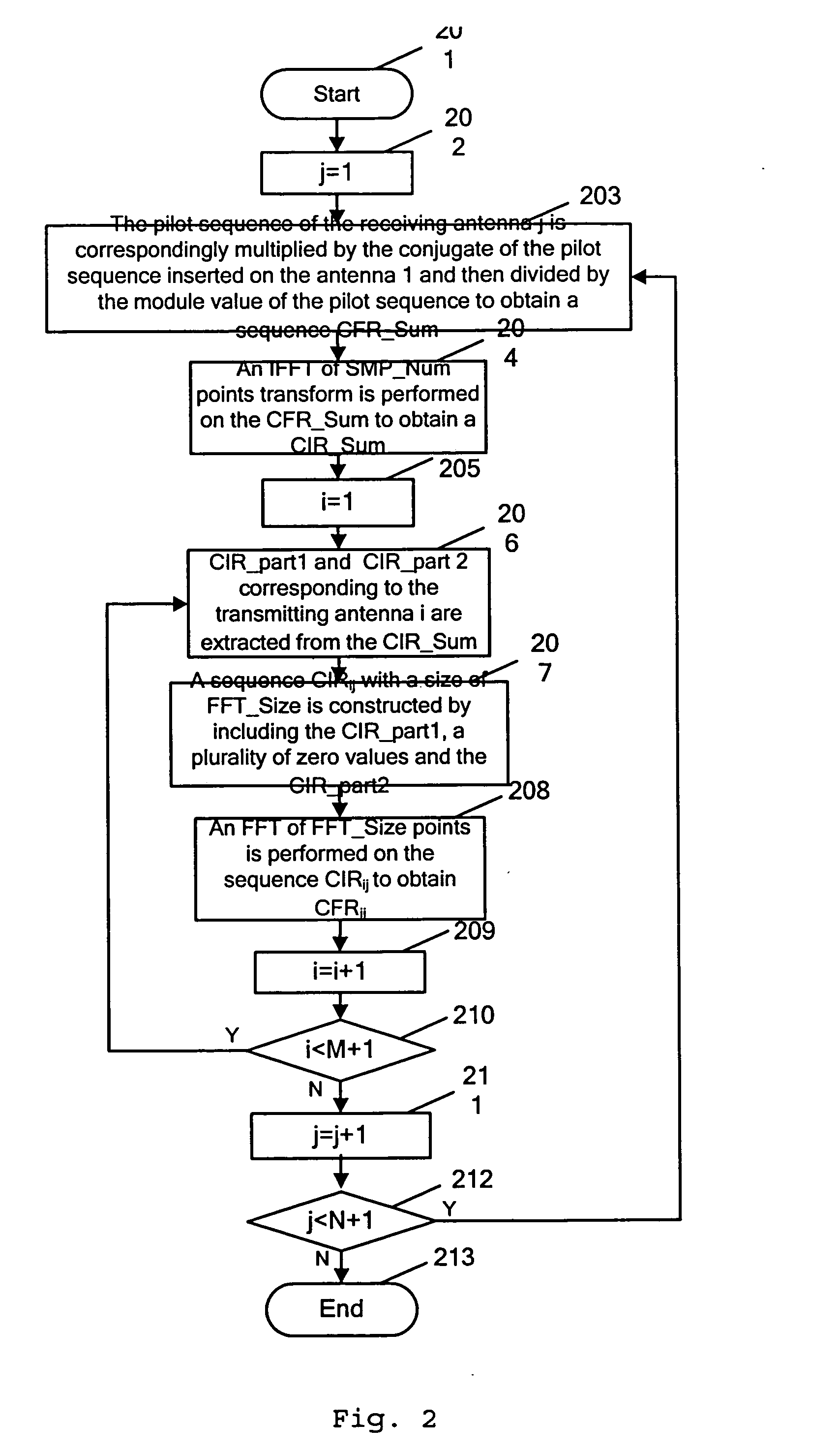Multiple input multiple output orthogonal frequency division multiplexing mobile comminication system and channel estimation method
a mobile communication and multi-input technology, applied in multiplex communication, diversity/multi-antenna systems, baseband system details, etc., can solve the problems of complex calculation of mimo-ofdm system, inability to meet practical applications in fast-varying dynamic wireless channels, and difficulty in applying to dynamic varying environment with relatively high moving speed, so as to simplify the framing of orthogonal frequency division multiplexing symbols of multiple antennas and reduce equipment complexity
- Summary
- Abstract
- Description
- Claims
- Application Information
AI Technical Summary
Benefits of technology
Problems solved by technology
Method used
Image
Examples
Embodiment Construction
[0021] Hereinafter, the embodiments of the present invention will be described in detail with reference to the accompanying drawings.
[0022]FIG. 1 is a schematic structural view of a MIMO-OFDM system with M transmitters and N receivers according to an embodiment of the present invention.
[0023] In FIG. 1, at transmitting end, numeral 110 denotes space time encoding means, numerals 120-122 schematically denote M inverse fast Fourier transformers (IFFT) at transmitting end, and numerals 130-132 schematically denote transmitting antennas corresponding to the IFFTs. In receiving end, numerals 140-142 schematically denote N receiving antennas at receiving end, numerals 150-152 schematically denote N fast Fourier transformers (FFT) each of which is connected with one of the receiving antennas respectively, numeral 160 denotes space time decoding means, and numeral 170 denotes channel estimation means.
[0024] As shown in FIG. 1, input data is encoded by the space time encoding means 110 an...
PUM
 Login to View More
Login to View More Abstract
Description
Claims
Application Information
 Login to View More
Login to View More - R&D
- Intellectual Property
- Life Sciences
- Materials
- Tech Scout
- Unparalleled Data Quality
- Higher Quality Content
- 60% Fewer Hallucinations
Browse by: Latest US Patents, China's latest patents, Technical Efficacy Thesaurus, Application Domain, Technology Topic, Popular Technical Reports.
© 2025 PatSnap. All rights reserved.Legal|Privacy policy|Modern Slavery Act Transparency Statement|Sitemap|About US| Contact US: help@patsnap.com



